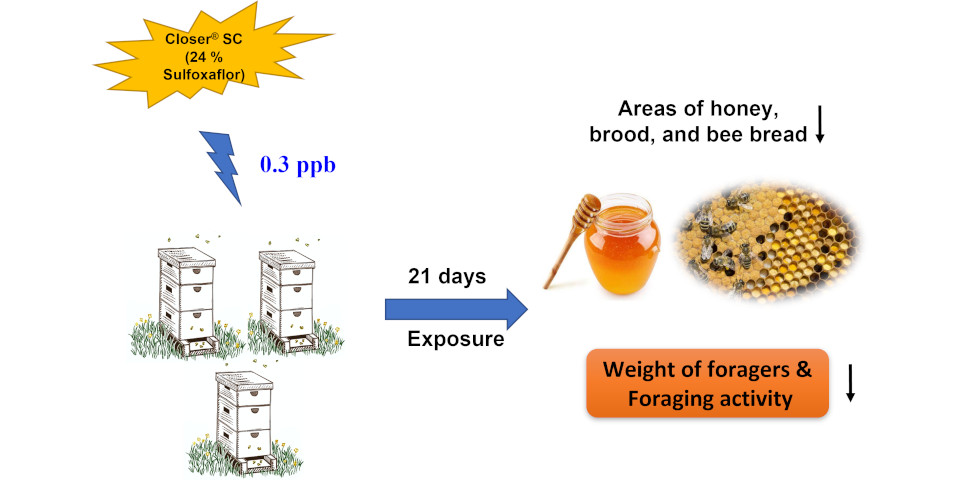The effects of sulfoxaflor on various pollinators have long been debated. However, there have been few in-hive studies on sulfoximines, and the effects on honey bee colony growth and foraging activity are unknown. Here, we calculated the LC50 of Closer® 24% suspension concentrate (SC) using honey bee foragers and then assessed the impacts of chronic exposure of honey bees to a lesser concentration of Closer® in a semi-field in-hive experiment. To do that, we used a worst-case exposure scenario and fed bees for 21 days with a sublethal and field-relevant concentration of sulfoxaflor (0.3 ppb) which represents the calculated LC5 value of Closer®. A total of six colonies was assigned to the pesticide or control treatment. Then, we evaluated the colony development and activity as well as the weight and foraging activity of individual foraging bees. We also revealed that sublethal Closer® exposure impacted honey bee colony growth and activity by reducing bee bread, honey, and brood production, as well as weight and foraging performance of individual bees when colonies were kept under field conditions. Given the findings of this study, as well as comparable findings reported on spray application of Closer® using standard application practices in semi-field conditions, sulfoxaflor’s potential harm to pollinators at realistic levels merits additional investigation particularly in combination with other stressors to better understand how novel insecticides influence pollinators and pollination services.
2408 Members
127 Countries!
127 Countries!










